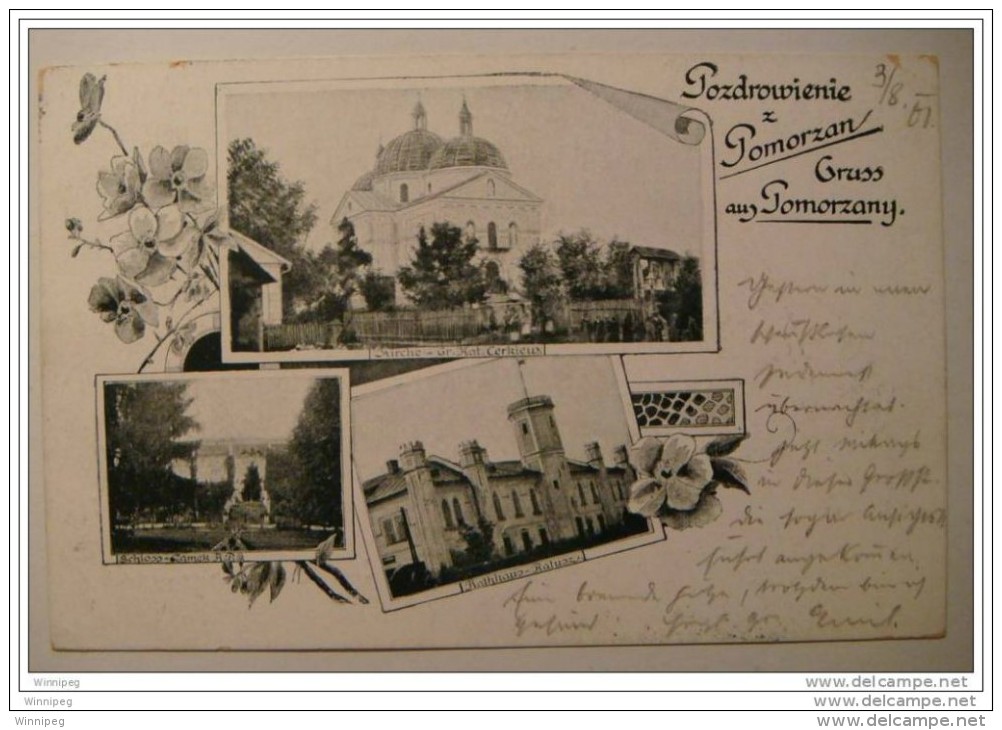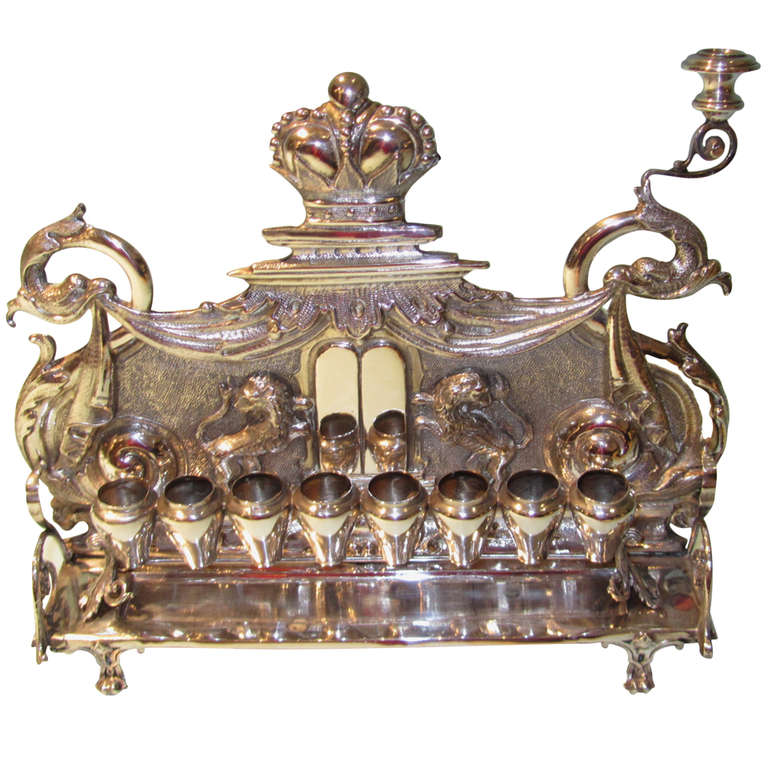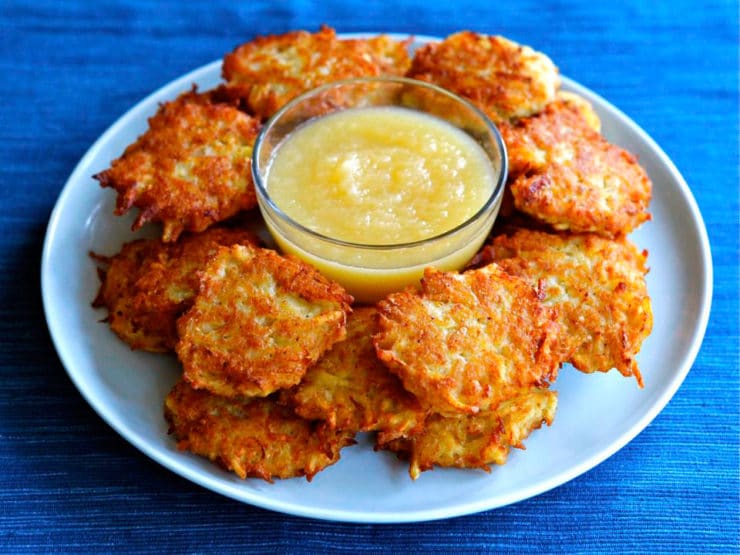My paternal grandfather John Nyznyk, is an enigma, a mysterious or inscrutable person. I never met him and have see only two pictures of him, both from his wedding to my grandmother Mary(Maria) Klak in 1914. There are a few family stories about him, but I have no way of verifying any of them. In this post, I am using material that has a source--no tales, no hearsay, only the facts. There are only a few sources that I am sure about--the marriage license, the baptismal certificate of my father and his application for United States citizenship. There are other documents, but I can't be sure that they are his. His story illustrates the problems of finding information for genealogy research.
If you know anybody with the name of Nyznyk or Niznik or Nisnik, who has ancestors from Galicia, they may be related to John and could shed some light on his story.
 |
| Map of Ukraine, green arrow points to Ternopil' |
 |
| Pomorjany (Pomorany) is about 15 km SW of Zbirov. and 48 km west of Ternopil" |
Arrival in the United States 1910
John Nyznyk was born on July 27, 1878 in Pomorainy, Galicia, a part of the Austrian-Hungarian. According to his Declaration of Intent for citizenship, he came to the Port of New York on March 12, 1910 on the Albany. The Intent (First Papers) was filed on November 19, 1926. This confirms his date of birth and birthplace. According to the ship's manifest, John arrived in New York on April 1, 1910, on the ship, S.S. Volturno which sailed from Rotterdam on March 14,1910. His name is listed as Jan Niznik. His age is either 22 or 32-- the handwriting is hard to read. He had $25 with him, he came from the village of Pomorainy in Galicia, his language and ethnicity Ruthenian (Ukrainian) and his occupation was laborer. He could read and write, and he left his wife Parasia Niznik in Pomorainy. The ship's manifest also states that he had been in the United States from 1901-1908. The name and address of the person he was going to in New York is illegible. |
| Old postcard sent from Pomorany--Pomorzany in Polish. Source: del campo.net |
Marriage to Maria Klak: 1914
John Nyznyk married Mary Klak on November 21, 1914 at St George Greek Catholic Church, 22 East 7th Street, New York, New York. On the marriage lisence he listed his occupation as a laborer and his residence at 533 East 6th Street, New York, New York. He also stated that his parents were Paul Nyznyk and Anastasia Romanowicz. The witnesses to the marriage were Michael Rudnicki (brother-in-law of Mary Klak) and Nicholas Malinowski. The priest officiating at the wedding was Rev. M. Lysiak.Birth of son Peter: 1915
Peter Noznick, son of John and Maria Nyznyk was born on August 18, 1915 in New York City at Bellview Hospital. Peter's surname on the birth certificate was Nausneck, no first name was listed.According to the Birth Certificate, the family was living at 403 East 92nd St , New York City. John's occupation was listed as harness maker. Peter was baptised at St George Church on September 12, 1915. On the Baptismal Certificate his name was listed as Peter Paul Nyzny . His baptismal sponsors were Michael Rudnicki and Ksenia Malynowska (also a relative of Peter's mother). The officiant was Rev. Pidhorecky.
World War I Draft Registration: 1918
In 1918, all men were required to register for the draft since the United States had just entered World War One. I found a Registration Card for a John Naznak, with a birth date of July 27, 1876. I think that this might be my grandfather, but the birth date listed is two years earlier than the birth date on his marriage license. His residence is 123 Avenue A, Room 12, New York City. His occupation is listed as upholsterer, his employer is Liberty Auto Trimming Company. He is described at tall, slender with grey hair and brown eyes. He also states that he has filed papers for citizenship, which is different from his Intent papers which he filed eight years later.United States Census: 1920
According to the 1920 Census, John Noznok was living at 613 East Eleventh St in New York City. There are several discrepancies in this Census record, so I am not sure that this man is my grandfather. His age is 42, born in 1878, and he states that he is married and that he has filed first papers. His occupation is listed as a trimmer in an auto factory. His year of immigration is listed as 1913, his birthplace is listed as Galicia and his mother tongue is Ruthenian (Ukrainian.) The only information that is consistent with other sources is his age, native language and birthplace and that he is married.Declaration of Intent to file for United States Citizenship 1926
John filed his Declaration of Intention for US citizen ship in 1926 in the Southern District of New York. He states that his name is John Nyznyk, he was born on July 27, 1878 in Pomorainy, Austria. His physical description lists his complexion as dark, his height as 5 feet, seven inches, his hair gray and his eyes brown. His occupation is upholsterer. His says that he is married and his wife Mary, born in Austria, who lives with him at 138 East Third Street, New York City. He also says that he came to the United States on the ship Albany, on March 12, 1910. He does not mention that he has any children. He signed his name "John Nyznyk" and the signature looks similar to his signature on World War I registration document. The date of filing is November 19, 1926.Petition for United States Citizenship 1930
John Nyznyk's Petition for Citizenship was filed on April 8, 1930. He lists his address as 533 East 6th Street, New York City, the same address as he had when he married in 1914. He says that he married Mary on November 21, 1914, and that her residence was unknown to him since 1915. He also states that she came to the United States in 1916 or 1917. He said that he has two children, Michalina born in 1910 and Paul, born in 1904. He also states that his wife, Anna Kowalsky died in 1913. He does not mention my father Peter at all. He said that he came to the United States on June 6, 1910 on the ship Niew Amsterdam, which left from Rotterdam, under the name Jan Niznik. His two witnesses confirming residency were Michael Pochmarsky and Stephen Hysa, both of New York. On November 10, 1930, he received certification of his citizenship by the US District Court at New York City, New York, petition number 167317. Again, inconsistencies are present in this document. His date of immigration and name of ship differ from the Declaration of Intent. The information about wife Mary contradicts what he stated in the Declaration of Intent as well.My Conclusions--based on the information I have
There are quite a few discrepancies in John's petition. According to his Petition (1930), he arrived on June 6, 1910 on the Niew Amsterdam. According to the ship's manifest (1910), he arrived in New York on June 1, 1910 on the S.S. Volturno. The wife listed on the ship's manifest was Parasia, not Anna. If he had been in the United States from 1901-1908(Manifest), he probably wasn't the father of Paul, born in 1904(Petition). In the Petition, he does not mention that he has a third child, my father, born in New York in 1915. He states in the Petition that his second wife's residence was unknown to him since 1915, but in his Declaration (1926) of Intent, he stated that he was living with her.I do not think that the Jan Niznik on the ship's manifest is my grandfather. There are three ships mentioned, the Albany, The Niew Amsterdam and the Volturno-- on which ship did he arrive? It doesn't seem that the authorities who determined his citizenship cross checked the sources.
Although John could read and write, I doubt that he had the knowledge to do the research necessary to find the records he needed. He probably had to hire somebody to find that information. So after studying the sources, I have concluded that the only information about John that is consistent is his name, birth date and physical description, place of birth and native language. His story did not end in 1930--I will revisit it next week.
























.jpg)




.jpg)
